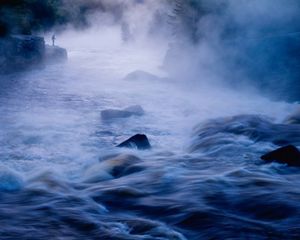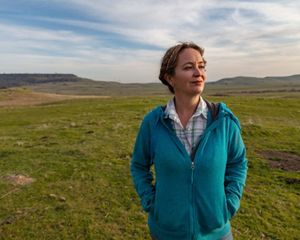
This article was written by Giulio Boccaletti, former Chief Strategy Officer & Global Ambassador for Water with The Nature Conservancy.
Growing up in a farming town in the middle of the flattest part of Italy, I considered Sir David Attenborough my hero. Every day I would sit in front of the television, enthralled by Sir David (improbably dubbed in Italian) as he illustrated the feeding habits of a ring-tailed lemur in an inaccessible forest in Madagascar or some other equally exotic species and location. He was my single access point to far-away nature. I was spellbound.
Today, I believe more than ever we need powerful storytellers who can mesmerize generations to engage with nature and imagine a better future. We need them to touch the hearts of millions of people. Our success depends on it.
But the nature documentaries I grew up watching fell short in one crucial aspect. If you were an alien landing on Earth from some faraway galaxy, and the only information you had about the planet were the images from these shows, you would conclude that no humans live here.
In the 21st century, the fate of nature and the well-being of people are no longer separate issues. Their stories are inextricably integrated. It is not enough to show the beauty of the natural world and hope people will want to protect it. The challenge is no longer just the protection of nature. It is the survival of people. So, what stories do we need to tell?
To answer this question, some colleagues and I started an initiative to encourage the development of films and programs, made by commercially successful producers for mainstream audiences, that would capture the essence of this new, modern natural world. Our mission: promote stories that show what people and nature thriving together looks like.
And that is how I found myself sitting on a boat in the middle of the Nile River in January 2019, with a camera crew and an Egyptian police officer armed with an MP5 submachine gun in tow.
My principal expertise is in water security. For months I had worked with a team of award-winning documentary makers to tell the story of water as I and others in the field understand it: a story of compromise, of second-best solutions, of urgency, of unimaginable risks, but also of surprising science, of compelling history. And with a central starring role for nature.
The documentary, a three-part series called The Molecule That Made Us, takes the viewers on a journey, from the depths of the Congo to the arid landscapes of Mexico to the urban neighborhoods of Gaza, following experts like myself who are grappling with the intersection of water, society and nature.
We began with the Temple of Isis at Philae, in Egypt. The temple is relatively recent by Egyptian standards: By the time it was built over 2,000 years ago, the pyramids had been standing for almost three millennia. We had come to film the “nilometer,” a steep stairway cut into the rock cliff next to the temple that heads down to the water’s edge. It was the climate model of antiquity: By measuring the height of the Nile flood against a system of measured marks, the priests of the temple could predict how much food the harvest would yield.
I found myself talking to the camera, using the example of Egypt to illustrate what it means for a society to work with the environment. The story of the Nile is one of a remarkable ecosystem that fed an entire civilization for more than three millennia with its rich, expansive floods.
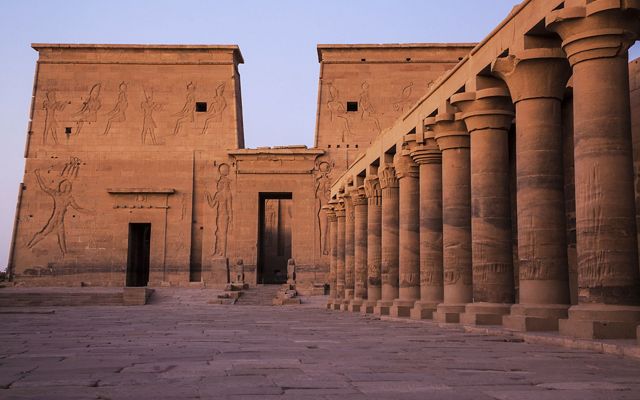
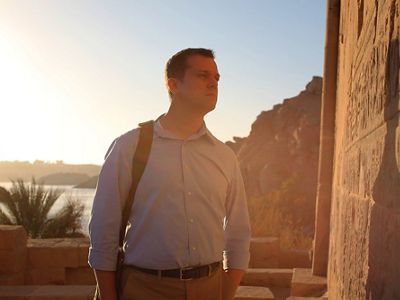
During the 20th century, the construction of the High and Low Aswan dams silenced the floods of the Nile. Agricultural fields are no longer fed by the rich sediments that the river once brought, and evaporating irrigation water causes salts to build up, poisoning soils. The nilometer, once so central to Egypt’s relationship to the river, no longer works.
But the scale of these challenges does not mean we cannot find modes of coexistence that work for both people and nature, even in the modern world. To show this, we filmed in the Catskill Mountains of New York state. It is an oft-told story, but one that bears repeating: Rather than invest in large-scale filtration infrastructure alone, New York City protected the forests that serve as the water source for 8 million urban residents downstream—a win-win for both people and nature.
The Molecule That Made Us, like other programs that TNC is partnering with and that are coming to broadcast soon, is an effort to tell powerful stories that will resonate as spectacular pieces of entertainment for a large audience. These are programs that move beyond the traditional approach of natural-history filmmaking that showcases the natural world in its pristine state.
Quote
If we can't imagine a world in which nature and people thrive together, we certainly won't be able to create it. People need to dream their future in order to achieve it.
We want to remain fundamentally true to the reality of the world today. Sir David is still leading the way. When, in 2017, he released the documentary series Blue Planet II, 14 million people tuned in to watch it in the United Kingdom, where I now live. The series showed the beauty of marine life. But this time, it also pulled no punches when it came to the impact that plastics pollution has on the oceans. For the first time, Attenborough was talking about the reality of conservation, not just the beauty of the natural world.
The series changed the debate on environmental issues in the U.K. Even Queen Elizabeth II got involved, cutting the use of plastics on the royal estates. Amidst this growing consciousness, litter making its way onto the shores of the country declined from the previous year by 16% in 2018 and by another 7% in 2019. And the show’s impact continues abroad. When it was broadcast in China, it drew 80 million viewers, grinding down the speed of the internet as everybody streamed it.
Audiences are no longer simply looking for a story of what was. They are looking for a story of what could be. If we can’t imagine a world in which nature and people thrive together, we certainly won’t be able to create it. People need to dream their future in order to achieve it.
We know a world where people and nature thrive together is technically possible. Our science says as much. But we now need our best storytellers to show us what it will look like when we live there. The frontier of conservation is right there for all of us—at the boundary of science and art.
Originally Published in Nature Conservancy Magazine,
Spring 2020 issue
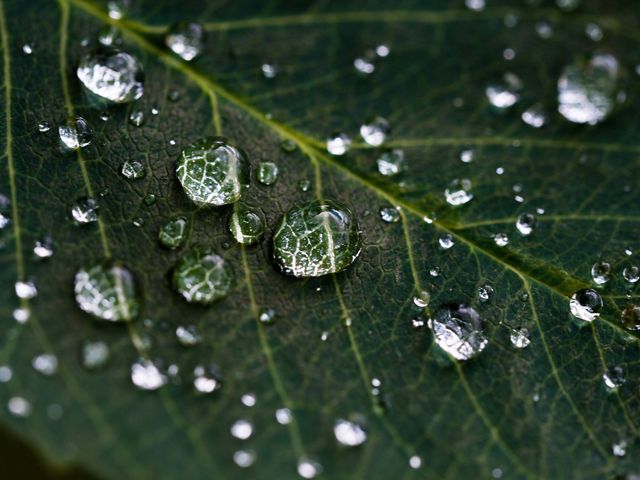
The Molecule That Made Us
H₂0, The Molecule That Made Us is a landmark, three-part series from PBS and WGBH that tells the human story through our relationship to water. Water has been at the heart of the human story since the very beginning, and now, we face a crisis of unprecedented proportions: we can no longer take water for granted.
Learn More and Watch The Series
Global Insights
Check out our latest thinking and real-world solutions to some of the most complex challenges facing people and the planet today.
